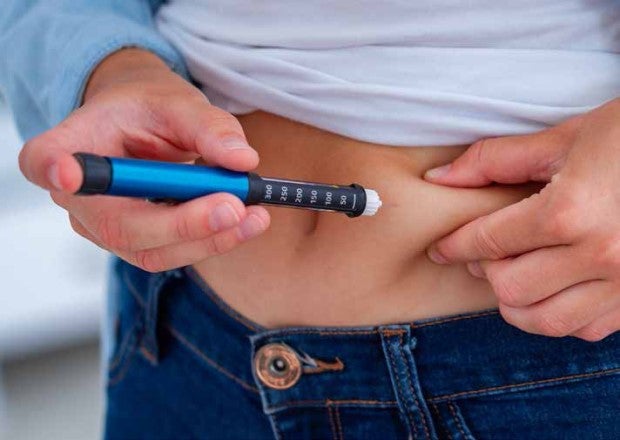
Though uncommon, diabetic ketoacidosis can occur if the fine balance between insulin therapy and blood sugar levels is out of whack.
Fasting can bring on high blood sugar levels in people living with diabetes.
This may sound contradictory or illogical as not eating and consuming carbohydrates during a fast should rightly bring down instead of raising blood sugar levels — but it is possible. Known as diabetic ketoacidosis, it occurs because of insufficient insulin to convert the high blood sugar levels.
“Fasting can be challenging for people with diabetes, but it can be done safely with appropriate precautions,” said Dr Teh Ming Ming, Senior Consultant, Department of Endocrinology, Singapore General Hospital (SGH).
This means being wary of the telltale signs of the condition — having high blood sugar levels, feeling frequently thirsty and drinking more water than usual (about five to six litres a day), urinating often, feeling increasingly unwell, and vomiting.
Patients who experience these symptoms should consult a doctor immediately. “It is actually a medical emergency. If patients do not get immediate treatment, they will become progressively more dehydrated with frequent urination and vomiting,” said Dr Teh.
To treat diabetic ketoacidosis, insulin is injected into the veins to bring blood sugar levels down quickly. They are also given intravenous fluids to replenish the amount lost. If the condition is not treated quickly, diabetic ketoacidosis can lead to coma and even death.
“With the right treatments, patients generally improve within 24 hours. But it also depends on the severity of the condition and how early the patient catches the symptoms,” he said.
Type 1 diabetes patients are more prone to developing diabetic ketoacidosis, although type 2 patients — usually those whose disease has advanced, whose blood sugar levels are less well-controlled, and who are on insulin therapy — can also get the condition.
This is because of the crucial role that insulin plays in the body. The hormone is naturally produced by the pancreas to help convert sugar in the body into energy. For people who cannot produce insulin (as in type 1 diabetics), or do not produce enough or when their bodies become immune to the insulin (as in type 2 diabetics), medication is needed to ensure the correct amount of the hormone is available. Otherwise, said Dr Teh, “the body has lots of sugar floating around. But without insulin, the sugar cannot be utilised as fuel. The body needs sugar all the time”.
Insulin injections or oral medications help achieve the desired balance between the insulin needed and the body’s blood sugar levels. Type 1 diabetes patients rely on insulin injections, as do type 2 patients whose disease has advanced and is harder to control.
When fasting during the Islamic Ramadan month, for instance, adjusting the needed insulin dose gets trickier. Muslims eat big meals before the sun rises to sustain themselves through the day when they do not eat or drink anything. If excessive insulin is taken, they risk getting hypoglycaemia. But if they overcompensate and the insulin is cut back too much, they can develop hyperglycaemia, putting them at risk of diabetic ketoacidosis.
Dr Teh stresses that diabetic ketoacidosis is relatively uncommon, in part because of the far fewer type 1 diabetes cases in Singapore. At the same time, symptoms do not occur suddenly, which means alarm bells should go off if patients find their blood sugar levels difficult to control. “Diabetic ketoacidosis is preventable. Diabetes patients need to remain vigilant to prevent its onset, more so if they are fasting,” said Dr Teh.
| Tips for safe fasting during Ramadan Diabetes patients should discuss with their physician before fasting so that treatment can be tailored to suit their needs. • Choose foods with low glycaemic index (GI) to prevent your blood sugar from fluctuating too much. For example, basmati rice has lower GI than regular white rice. • Have a well-balanced meal in the morning and take an appropriate amount of insulin for that, taking into consideration that you will not be eating through the day until sunset. • Look out for symptoms of low or high blood sugar levels throughout the day. • When breaking fast in the evening, drink plenty of fluids and have a healthy meal. • Have a trial run before the fasting month to find out how your blood sugar fluctuates and how to adjust the insulin dose accordingly. |













 Get it on Google Play
Get it on Google Play